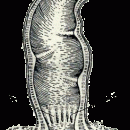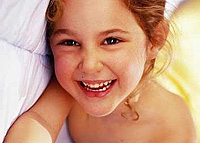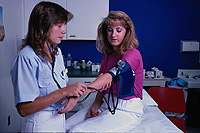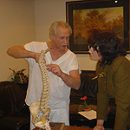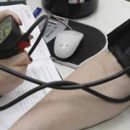Cystitis is manifested by pain at the bottom of the abdomen, burning in urination, frequent urges in the toilet and other signs. Methods of treatment and diagnosis of the uncomplicated form of cystitis have its own characteristics. What - Talks in the article.
Content
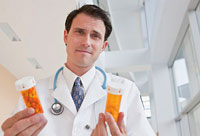
Cystitis — Inflammation of the mucous membrane of the bladder. This pathology is the most frequent
Among inflammatory diseases of the lower urinary tract in women, whereas
men meet extremely rarely — 6-8 cases per 100 thousand. Cause — in
Some anatomical features of the female organism: short wide
urethra and proximity to her vagina and rectum, where, as you know, exists
Natural microflora, which contains a large number of microorganisms.
If you get into the urethra, these bacteria behave like
pathogenic and appeal inflammation.
However, cystitis development occurs due to certain factors:
-
supercooling
lowers skin temperature that launches blood redistribution process in
The body, including her reset to pelvic venous plexus. Thus,
Increases the permeability of small vessels of the mucous membrane of the urinary tract,
which increases the risk of infection; -
Active
Sex life contributes to the mechanical transfer of bacteria from the vagina in
urethra, leads to the irritation of the mucous membrane, and hence the reduction of its protective
functions; -
Gynecological
Diseases (vaginites, colpits, hormonal disorders) can change balance
Normal flora in the vagina; -
usage
Contraceptives containing spermicides increases the likelihood of development
infection.
Note,
that we are talking about uncomplicated cystitis from non-empty women. Categories of patients,
having complications (obstruction of urinary tract, structural and
Functional changes in the kidneys and bladder, surgical operations on
urinary ways in history, concomitant somatic diseases, immunodeficiency
states and pr.), pregnant women with cystitis require special
diagnostic approach and other treatment.
95%
cases of pathogens are gram-negative
Microorganisms: Escherichia coli (77%), Klebsiella SPP.,Proteus SPP.
It has been established that in recent years, intestinal strains have significantly spread
Sticks resistant to ampicillin, co-trimoxazole, nitroxoline, t.E.
Antibacterial drugs, widely used in urology.
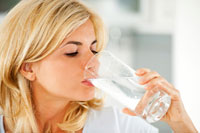
Cystitis
It begins acutely and clinically manifested by dysuria: pain at the bottom of the abdomen, burning
When urination, frequent urination with small portions, urine turbidity. Temperature
bodies usually do not rise above 38 degrees Celsius, strong heat — This is a symptom
Pyelonephritis, which can develop in case of ascending infection.
To
diagnose the disease with a laboratory, usually enough
urine analysis with sediment microscopy. Reliable criterion consider ≥10³
Something uropatogen in 1 ml. Sowing urine with the definition of sensitivity to
Antibiotics are carried out only in complicated cases: in the development of pyelonephritis,
ineffective therapy within 2-4 weeks.
Treatment
is carried out with the help of empirical antibiotic therapy, which is appointed short
Course, one of the following funds. Preparations of choice are «Phosphomycin»
(«MONURAL» — 3 g, one-time) and fluoroquinolones («Ciprofloxacin» — 250 mg 2
times a day, «Offloxacin» — 200 mg 2 times a day, «Norfloxacin» — 400 mg 2
times a day, «Levofloxacin» — 250 mg 1 time per day). To advantages «Phosphomycin»
It is worth attribute usability (single reception), creating high
The concentrations of the active substance in the urine, however, the drug does not penetrate into
mucous membrane, which may be in some cases a significant disadvantage.
Fluoroquinolones, on the contrary, accumulate in the epithelium, making it appropriate
Using the late start of treatment and the presence of microhematuria
Genesis in analyzes. Duration of their reception — 3 days. Alternatively, you can
use «Furadonin» (50 mg 4 times a day), but the rate is longer — 7
Days. Together with antibiotics to reduce symptoms, abundant drinks are prescribed (2-2.5
l / day.) and analgesics — if there are pains («Ibuprofen», «Diclofenak»).

